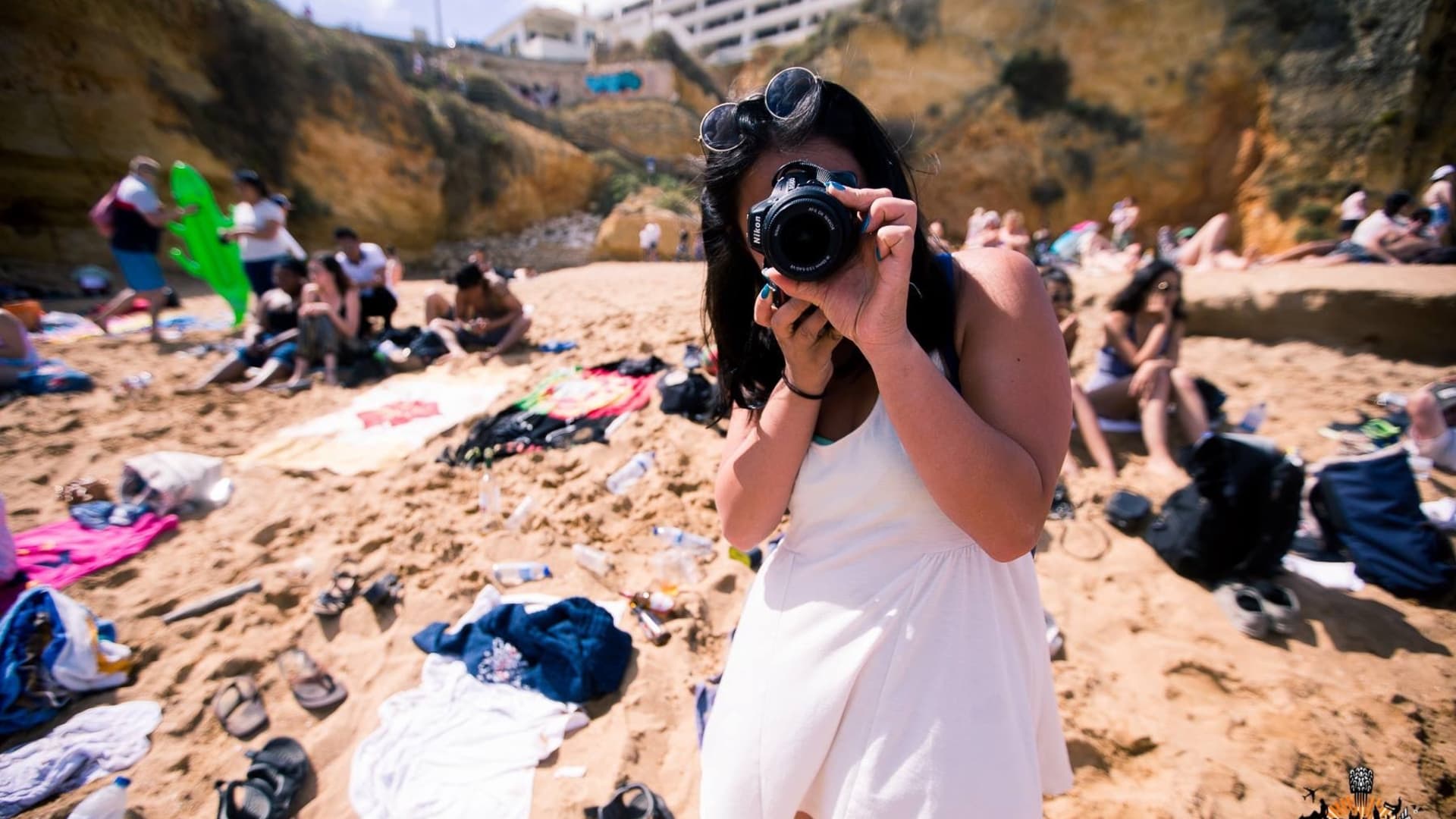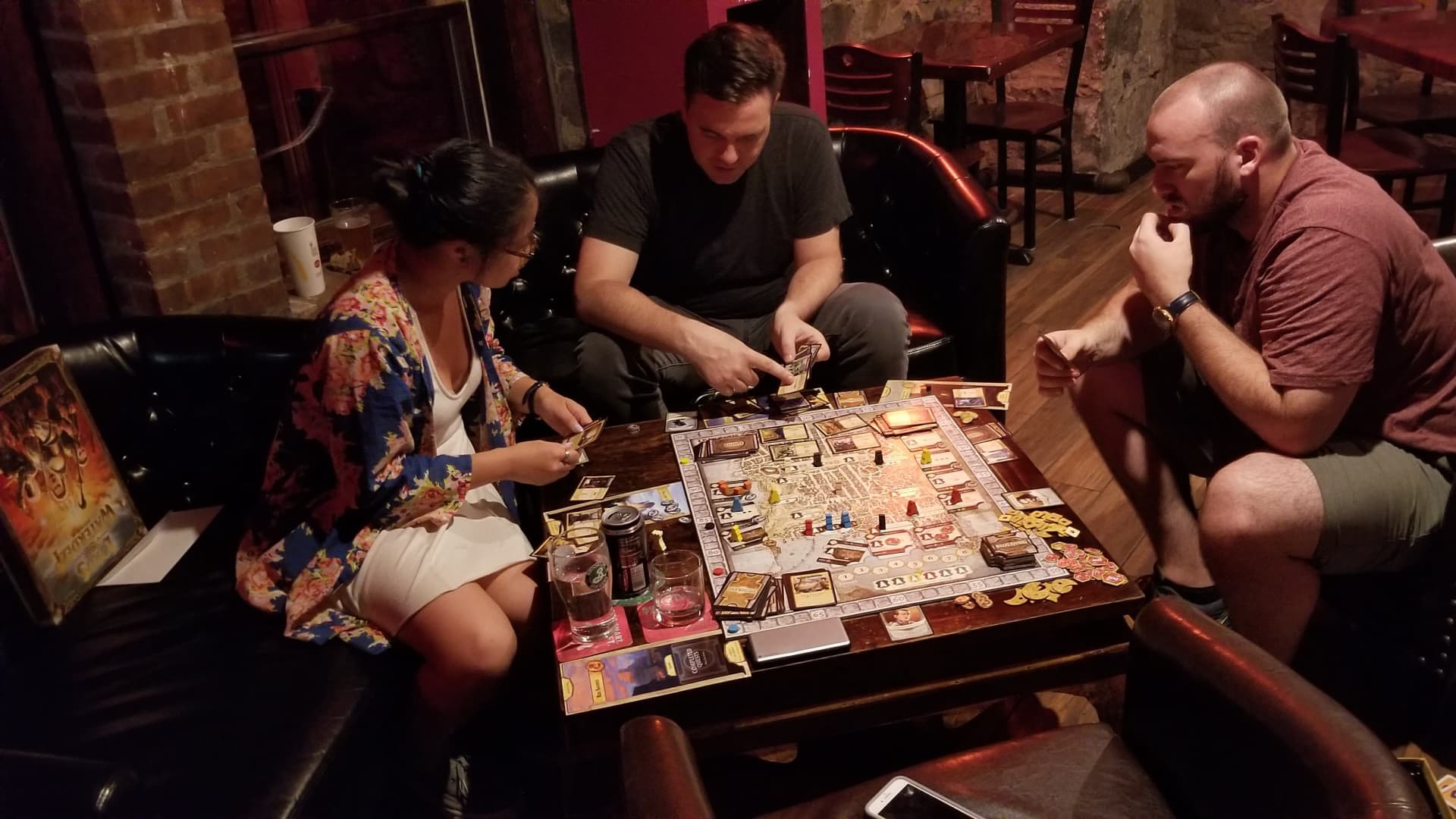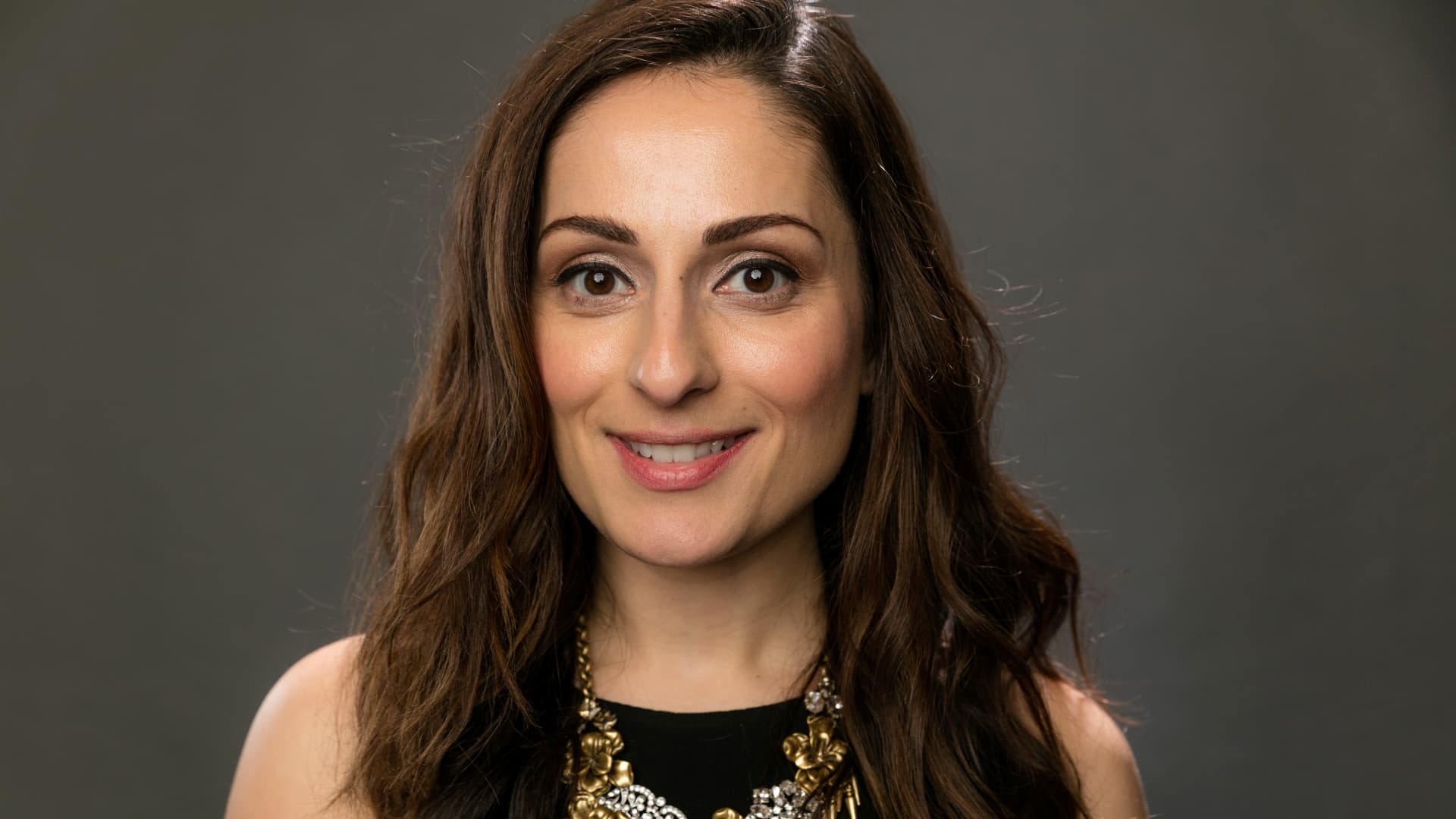
This story is part of CNBC Make It's Millennial Money series, which profiles people across the U.S. and details how they earn, save and spend their money.
After graduating from Ithaca College in the spring of 2018, Elena Haskins landed her first full-time job in New York City. But the 23-year-old is far from a novice when it comes to working.
"I've always had part-time jobs," she tells CNBC Make It. "I think it's important to have a side income, even if you have support from your family. You want to have your own money."
Don't miss: The best cash-back credit cards with no annual fee
At Ithaca, Haskins worked for career services, in the library and was an orientation leader. Today, she's a full-time associate designer at finance media and conference company PEI, but works on side projects outside of her 9-to-5: She does freelance photography and recently launched a website, Converge, that serves as a guide for college grads transitioning into the real world.
Her side hustles aren't boosting her income significantly right now — Converge is a free resource and her photography generates about $500 a year, which is "nice side cash to have," she says, "but I'm definitely not relying on it."
The Brooklyn resident lives on $50,000 a year — her salary at PEI — a portion of which goes toward paying off her student loans. That debt isn't stopping her from making the most of her 20s.
Money Report
"I definitely think you can live comfortably on a salary of $50,000, even in New York City," says Haskins. "It's an expensive city, but I think if you know where your money is going and you recognize what your priorities are, it's totally doable."
What she earns
Haskins, who started her full-time job in September 2018, is happy with her $50,000 starting salary, but "I'm definitely excited to negotiate when I hit the one year mark," she says.
She's part of an organization called Ladies Get Paid, an online network of thousands of women worldwide: "There's a whole channel about negotiating, so I read that every day to learn about what people are doing, especially in my industry, and I try to learn from other women in power and people in leadership positions."
Her goal is to earn $100,000 by age 30. Even if she starts making more money, though, she doesn't think it will alter her lifestyle significantly: "I'm not just going to start spending a lot of money on food or Ubers. A lot of it would probably go into savings. But maybe I could buy more organic eggs or nicer shampoo — it would be nice to have that little perk. In general, my budget will still be pretty similar even if I get a pay raise."
What she spends
Here's a breakdown of everything Haskins spends in a typical month.
Rent: $950
Haskins lives in Brooklyn with one roommate and pays $950 a month for her half of the apartment.
"I think there are a lot of misconceptions about Brooklyn and New York in general," she says. "Yes, it's expensive, but there are places that you can live, especially for recent grads or young people or people on a budget, as long as you are balancing your money properly."
While rent is her biggest expense by far, "for me, it's definitely worth it to live in New York City," she adds. "There's so much opportunity. There's so much happening. I can't imagine living anywhere else."
Professional development: $340
One of Haskins' bigger expenses is a 10-week user-experience certification class that she started in July. She was awarded $1,500 in scholarship money and is on a six-month payment plan to cover the rest of the tuition. She'll owe $340 a month through December 2019.
"Education is really important to me, especially if it aligns with what I want to do professionally," she says. "I love doing graphic design, but I really want to get into the user experience side and this class will give me a more formal background into it."

Food: $340
Haskins shops for groceries twice a month and spends about $120 total. On average, she spends another $220 on restaurants, but that expense fluctuates — if friends are in town, for example, she'll spend more going out.
She never orders in, though: "That's one thing I'm really against because I don't want to pay fees for delivery. I don't want to spend money just because I'm feeling lazy."
Transportation: $145
Haskins pays for an unlimited metro card — $120 comes straight out of her paycheck every month — which she uses to commute from Brooklyn to her office in Manhattan.
She also spends about $25 a month on ride share services. "I'm pretty mindful about using my metro card because I am paying for it, so I try not to use Uber or Lyft that often," she says. "But when I do, it's usually late at night and sometimes on the weekends."
Debt repayment: $130
Haskins has been paying down her student loans, which started at around $16,000, since her senior year of college. "I always had a little bit of side money from part-time jobs, so each week I would put a little bit toward it so I could lower my payment and interest after graduation."
Now she owes closer to $11,000 and makes the $130 minimum payment every month.
Before she started her certification program, Haskins was putting $300 a month toward her loans, "but I had to redistribute my budget a little bit to accommodate the class," she explains, adding: "It's definitely worth it because it's for education and professional development."
Her goal is to be debt free in the next five years. To do so, she plans to increase her monthly payments again at the start on 2020, when she's done paying for her certification class.

Everything else: $275
- Subscriptions: $75 (gym, Spotify, Squarespace, Adobe Cloud, Google storage)
- Entertainment: $60
- Utilities and Wi-Fi: $50
- Phone: $40
- Donations: $30 (to Planned Parenthood and Radiolab)
- Laundry: $15
- Insurance: $5 for life insurance (she's on her parents' health insurance plan)
What she saves
Haskins saves $880 a month: $330 goes automatically from her paycheck into a SIMPLE IRA, a tax-deferred employer-sponsored retirement plan, and $550 goes straight into her high-yield savings account. Her employer offers a match on her IRA.
Her savings account consists of different buckets — there's one for travel-related expenses, one for emergencies and one for gifts and donations. Currently, she has $4,500 in her emergency fund bucket but wants to eventually have the equivalent of her salary saved.
She's automated everything — as soon as her paycheck hits, a percentage of it goes straight to each of her savings buckets — which helps keep her savings rate high. "I like to live my life with the least amount of money available to me," she says. "I put it away in savings automatically so I don't have access to it."
Keeping it cheap in an expensive city
While New York is one of the most expensive cities in the world, it's possible to have fun on a budget, says Haskins: "You don't have to go to really expensive restaurants. You can go to food stands on the street or meet up with people in the park. A lot of my friends and I have been doing picnics and potlucks, so that's a really good way to hang out with people without spending a lot."
She pays $10 for a yearly membership with Brew N Boards, a group in NYC that meets regularly to drink and play board games: "It's awesome because I can learn new games, and it's only $10 a year."
She's also signed up for email lists and newsletters that alert her about free events in the city.

Turning her passion into a side project
When she's not at work, Haskins spends most of her time working on her website, Converge, which covers everything from how to write a resume and create a budget to navigating the apartment search process and making friends in a new city.
"I wanted to create an actionable resource to give to people," says Haskins, who worked in the career services department at Ithaca for three years and has aspirations to start a career development consultancy.
"Right now, it doesn't make me money," she says, "but I think it's really important to not always do things for money. For now, I really want to give back. So many people were helping me when I was transitioning and I want to do that for other students."
What the experts say
CNBC Make It asked personal finance expert Farnoosh Torabi to comment on what Haskins is doing well and how she could improve. Here are her thoughts.

She's an excellent saver and allocating her money wisely
Her savings rate is impressive, says Torabi. She's smart to keep her biggest expense — housing — as low as possible for where she lives: "Her rent is admirable — $950 is a lot for most cities, but to be able to pay less than $1,000 a month in rent in New York is pretty great."
Plus, as a percentage of income, she's spending the right amount: "She's probably spending close to 30% of her take-home pay, after taxes, on rent," says Torabi, who advises keeping your housing budget at 30% or less of your income.
An emergency fund that covers three months of expenses is plenty
While Haskins' goal of saving $50,000 in an emergency fund is commendable, she doesn't need to set aside that much, says Torabi: "She could get by with a three-month savings cushion, which would be closer to $10,000."
Rather than putting $550 in her high-yield savings account, which includes emergency savings, and $330 in her retirement fund, "let's flip it," says Torabi. "Your priority should be to max out tax-advantaged accounts first. The SIMPLE IRA is giving her two benefits: a match and a tax deduction."
By flipping her savings around, she'll still be adding enough to her rainy day fund, but allowing a bigger chunk of her money to work harder in a retirement fund.

She could consider investing in a Roth IRA
As someone in her early 20s, with a good salary and a manageable amount of debt, Haskins is "a prime candidate for getting a head start with investing," says Torabi.
After maxing out her SIMPLE IRA, or at least contributing enough to get the full company match, "the next best place to put her money would be in a Roth IRA," she says.
With a Roth IRA, you contribute after-tax money, so you can withdraw the contributions and earnings tax-free once you reach age 59½. The reason this type of account is a particularly good option for Haskins, and anyone early in their career, is because younger workers are likely earning less today than they will in the future. That means you're in a lower tax bracket and paying less in taxes than you would later on.
There's an income cap on the Roth IRA, which the IRS sets each year based on modified adjusted gross income (MAGI): For 2019, a single person with a MAGI of $137,000 or more, and a married couple making more than $203,000 cannot directly contribute to a Roth. That's why it's smart for Haskins to take advantage of the Roth now because, "as she earns more money, she'll be phased out," says Torabi.
There's also a contribution limit: In 2019, it's $6,000 a year for people under age 50.
She should aim for a salary of more than $100,000 a year
As for Haskins' goal to make six figures by age 30, "I would push her even further," says Torabi. "She could probably get there by 27 or 28."
It's good that she's setting specific goals, adds Torabi: "That's what motivates you to ask for the raises and look for bigger job opportunities and get side hustles." Especially for young women, "it's really great to be focused on earning and reaching that goal of the six-figure salary. I'm confident she's going to get there."
What's your budget breakdown? Share your story with us at makeitcasting@nbcuni.com for a chance to be featured in a future installment.
Don't miss: This 27-year-old making $80,000 wants to triple his income in a year—here's how he spends his money






